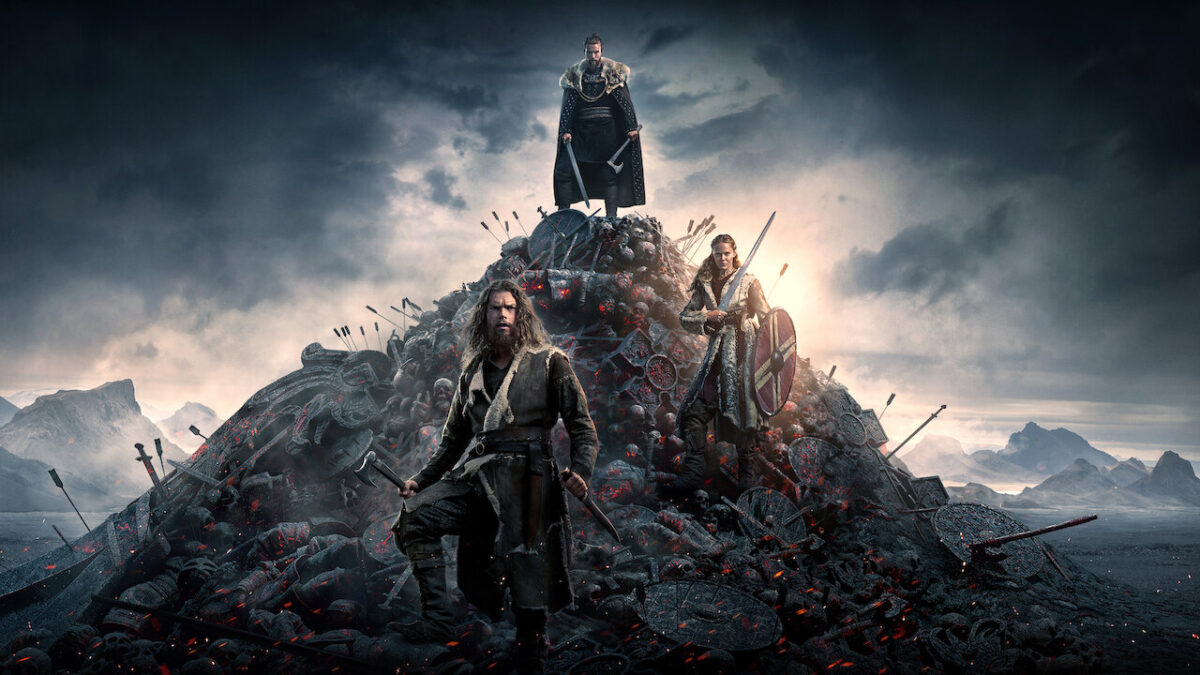Years ago, in my first installment in our Episodic History series, I made a pitch for a series covering the series of events that led to the Norman victory at Hastings in 1066. The maneuvering of such figures as Harald Hardrada, William of Normandy, and the House of Godwin seemed ready-made for the dark history treatment currently all the rage. I am now cautiously excited to announce that my show may have finally arrived in the form of Vikings: Valhalla. I must admit, I originally began watching Vikings: Valhalla as an obligation. I had watched the entirety of its predecessor, Vikings (reviewed here on Concerning History), and while I figured this would likely be more of the same cutthroat politics only thinly veiled with badly-adapted history, I knew it deserved at least a chance. I have seldom been more pleasantly surprised.
Valhalla opens with the reignition of conflict between the kingdoms of England and Denmark as English King Aethelraed II (known to posterity, though not in the show, as “The Unready”) orders the massacre and destruction of all Danish settlements remaining in the “Danelaw” of England. This predictably leads to outrage across all Scandinavia, culminating in a massive invasion of England led by King Cnut (or Canute, in the show). In a stunning series of events, the kingdom of Alfred and his heirs that had weathered the height of the Viking Age falls to Cnut and his father, Svein Forkbeard, setting in motion half a century of turbulent North Sea politics that ultimately results in William, Duke of Normandy, conquering Anglo-Saxon England and instituting the Anglo-Norman state that persists to this day. Woven into this tapestry are the budding stories of the conversion of Scandinavia to Christianity and the personal saga of a young Leif Eriksson, possibly the most famous Viking to have ever lived in modern times, at least). I hadn’t dared hope that these were the events hinted at in the show’s cryptic promotional material, but this little-remembered period, complete with Emma of Normandy, young Harald Hardrada, and young Godwin of Wessex, has indeed finally made it to screen. Only time will tell if the series makes it to its logical climax at Hastings.
With all this said, my praise cannot unfortunately be entirely glowing. Valhalla’s opening scenes of the Saint Brice’s Day Massacre are explicitly framed as ethnic cleansing in a manner wholly inappropriate for its period and content, complete with the use of the phrase “the Danish problem” in clear reference to 20th century genocides. This is laughable for any number of reasons; the English being in a state of nearly-constant war with Scandinavian armies and raiders for two centuries; the intermarriage of the Danes across much of the British isles; a lack of anything approaching the modern concept of ethnicity; take your pick. This is only the most obvious manifestation of one of the more regrettable holdovers from Valhalla’s predecessor, which I originally remarked upon in my review of Vikings. The decision to make Vikings the protagonist of the show results in a bizarre skewing of morals, with the bloodthirsty medieval raiders somehow portrayed as morally equal, if not superior, to the Christian kingdoms they pillage, at times even being cast as victims of Christian prejudice, notwithstanding their previous swathe of greed-motivated destruction. Far better to take the approach of The Last Kingdom, where every side is shown to be reprehensible in their own ways.
If one can keep solid footing in their perspective, however, Vikings: Valhalla holds as much promise as any show in my recent memory. This first season tells its story well, with any fudging of historical events clearly motivated by a desire to tell a better story onscreen. I am always a proponent of putting underserved events on screen, and none deserve such a modern treatment more than these. In the words of my beloved Star Wars, I will be watching this show’s career with great interest. I invite you to, as well.
